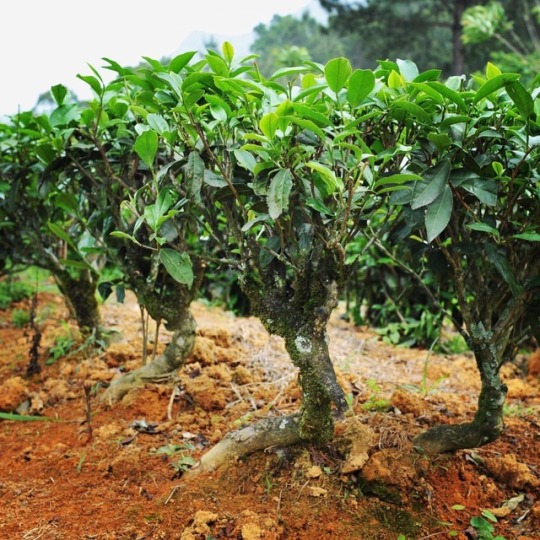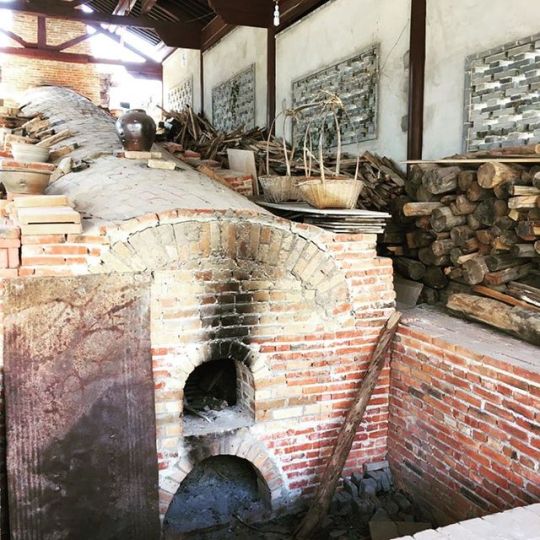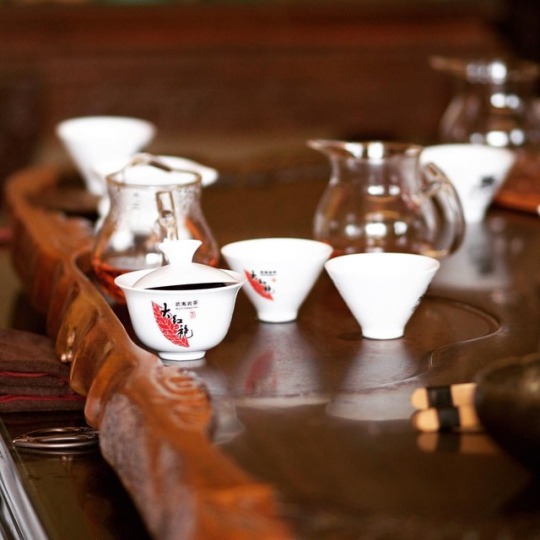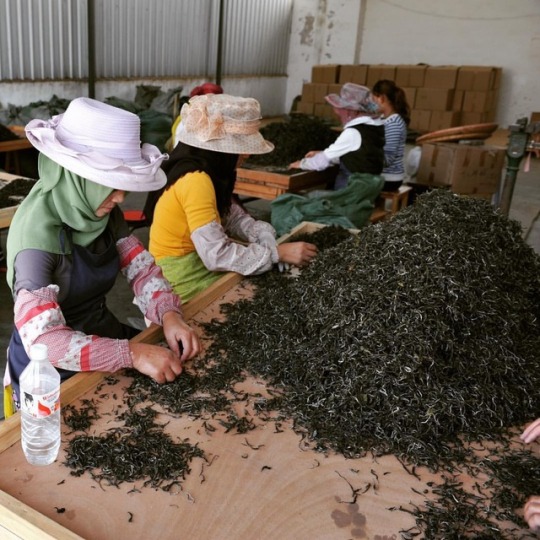Photo

A tea shop and market just outside Menghai, Yunnan, China. Menghai is one of the most important Pu Erh production area in all of Yunnan and it is surrounded by many famous tea mountains. For lovers of Pu Erh this is as important an area as any in China. Menghai is also the home of a very famous tea factory. The Menghai Tea Factory was founded in 1940 and is located in Menghai County, Xishuangbanna Prefecture, Yunnan Province, China. The factory was originally called The Fo Hai Tea Factory but changed its name to Menghai Tea Factory in 1953. It is credited as being one of the first two factories to make "ripe" AKA Shou Pu Erh tea in 1973 (the other factory was The Kunming Tea Factory). Shou Cha, AKA ripe or cooked Pu Erh is specially processed to imitate aged raw or Sheng Pu Erh tea. The process does not actually employ cooking to convert Sheng Cha into ripened Pu Erh. It creates conditions to approximate the result of the aging process by prolonged bacterial and fungal fermentation in a warm humid environment under controlled conditions using a technique called Wo Dui, AKA wet piling which involves piling, dampening, and turning the tea leaves in a manner much akin to composting. The finished Shou Pu Erh is then pressed into various size bricks, cakes, or other assorted shapes for storage and further aging. #thehappyteaman #menghai #menghaiteafactory #wodui #sheng #shou #xishuangbanna #fermented #postfermented #puerhtea #kunmingteafactory #outdoormarket #ripepuerh #cookedpuerh #rawpuerh #teaproduction (at Menghai)
#sheng#xishuangbanna#cookedpuerh#fermented#puerhtea#ripepuerh#rawpuerh#teaproduction#kunmingteafactory#wodui#menghaiteafactory#shou#menghai#thehappyteaman#postfermented#outdoormarket
1 note
·
View note
Photo

Cornelius, my lucky rat tea pet sits with some of his own pets waiting on the tea table for his daily tea bath. The birthplace of tea pets, Yixing, was first famous as the birthplace of “Yixing clay” in Song dynasty (960 – 1279). With the popularity of the Yixing clay teapot, Yixing became a production center for many other kinds of teaware as well. A tea pet is a small clay figure, which is kept by tea drinkers for good luck. They are made of Zisha or Yixing clay, from the same area around Yixing in Jiangsu Province, China. Just like Yixing teapots, tea pets are usually un-glazed and are made in a variety of clay colors. Tea lovers use a tea pet by placing it on their tea tray during Gongfu Cha brewing and pouring water and tea over them as they make their tea. Tea pets are molded into zodiac animals or Chinese mythical creatures to symbolize good luck, fortune, and happiness, as well as historical or mythical characters such as Quanyin or Buddha. As one’s collection of tea pots grows so to does their collection of tea pets. Phoenix Tea in Burien and Crimson Lotus Tea are both good source for tea pets.
1 note
·
View note
Photo

Sixty-year-old tea plants near the top of Dajin Mountain in Southwest Fujian Province, China growing in rich, red volcanic soul. Planted in the early 1950's as part of a central government project, which was soon abandoned, they grew to over twelve feet tall. About five years ago the tea gardens were brought back into production as part of a five star hotel/resort/tea production project to be called The Cloud Nine Resort Hotel. When I visited in 2015 the tea plants had been pruned back to two to three feet and were producing tealeaves for the new, fully operational, state of the art tea production facility that was attached to still unfinished hotel. Anxi style rolled Oolongs, Wuyishan style strip Oolongs, as well as Fujian Hong Cha style Black Teas were all being made under the watchful eyes of a team of Tea Masters from Taiwan. The broad but short trunks of the sixty-year plants had healthy young branches with the years first spring tealeaves ready for picking. It needs to be noted that although the plants are now a mere two to three feet tall the root system and biomass underground is that of much older plants giving the leaves complex and mature qualities not found in younger plants. The hotel and resort may be open by now I'm not certain but the teas made atop Dajin Mountain are beautiful and world class. #thehappyteaman #dajin #dajinmountain #resort #teaplants #tea #springpicking #anxi #wuyishan #fujian #hongcha #biomass #teaproduction #firstflush #worldclass #beautiful #cloudnineresort #volcanic #volcanicsoil #richred
#beautiful#springpicking#dajin#anxi#worldclass#resort#firstflush#volcanic#dajinmountain#biomass#thehappyteaman#tea#wuyishan#hongcha#teaproduction#cloudnineresort#richred#volcanicsoil#teaplants#fujian
0 notes
Photo

These two photos show a wood-fired Juan Shui, Xi Shi teapot and the Dragon Kiln in which it is fired. Dragon Kilns in China today are very rare, no more than two or three are still in use today but many a century or two ago they where much more common throughout China. Built on a hill and breathing fire from one end the resemblance to a dragon is obvious. Wood, charcoal, and bamboo are used as fuel and it often takes a day or more for the firing to be completed. The kilns are know for the exquisite textures and colors on the surface of the clay ware fired within their walls. And the Dragon Kilns are also known for the havoc wrought on the wares fired in them. Often as much of 25% or more of each firing is lost due to breakage caused by the high heat and chaos caused by the fuels unpredictable nature. On the positive side, those teapots and other wares that survive have unique markings and are unsurpassed in their tea brewing abilities. These treasures are highly sought after and command high prices with the most expensive examples having the highest degree of color and texture variation. #thehappyteaman #jianshui #dragonkiln #woodrired #unique #treasure #bamboo #wood #charcoal #experience #texture #variations #expensive (at Jianshui)
#texture#expensive#wood#jianshui#charcoal#experience#unique#treasure#bamboo#variations#woodrired#dragonkiln#thehappyteaman
1 note
·
View note
Photo

Swipe right for three pictures showing how Bi Luo Chun is traditionally processed. Biluochun is a famous green tea grown in the Dongting mountain region near Lake Tai, Jiangsu, China. Also known as Pi Lo Chun, it is best known for its delicate appearance, fruity taste, floral aroma, and showy white hairs on the leaves and floating on the tea. The name Biluochun literally means "Green Snail Spring". It is called so because it is a green tea that is rolled into a tight spiral, resembling a snail. The freshly picked tea leaves are hand-rolled in a wood fired wok for 20 to 30 minutes at which point the Tea Master deems it ready. It is most often brewed and enjoyed in a glass "Grandpa Style. #thehappyteaman #biluochun #laketai #jiangsu #woodfired #wok #experience #grandpastyle #greensnailspring #whitehairs (at Jiangsu)
#biluochun#experience#wok#greensnailspring#jiangsu#thehappyteaman#grandpastyle#whitehairs#woodfired#laketai
0 notes
Photo

Iconic looks from the best teashop in Bellevue, WA, Smacha Tea. A wondrous shop conceived and realized by Teamaster Jason Chen in 2012. Golden tea canisters, hardwood tea bar, waterfall, and unique and functional tea ware greet newbies and tea lovers alike. Add to that what is called at Smacha "Real Tea", that is tea grown under the watchful supervision of Teamaster Chen from his own or his long-time partners tea gardens in China. A visit to Smacha is always a worthwhile endeavor. (at Smacha Tea)
0 notes
Photo

An evening of tasting Gungfu Cha style is in store. Yixing teapots, a cha hai , a tea table, and all other cool tea table accessories. Tea cups for everyone are ready too. Tea ware is the father of tea and water is called the mother of tea. And, of course, there will be tea, lots of tea. #thehappyteaman #experience #gungfu #chahai #tea #lotsoftea #mother #father #teatable #water #style #teatasting (at SeaTac, Washington)
#tea#style#chahai#mother#teatasting#gungfu#water#experience#father#thehappyteaman#lotsoftea#teatable
0 notes
Photo

Wuyishan tea tasting and sampling, May 2016. Da Hong Pao and Rou Gui were the winners and we tasted many that day. Rock Teas grown in the protected areas amid the large rocks and cliffs are prized throughout the world. Those teas also command quite justifiable high prices. #thehappyteaman #teamaster #tea #rocktea #yancha #rougui #dahongpao #protectedarea #wuyishan #highprice (at Wuyishan)
4 notes
·
View notes
Photo

Tasting/sampling rock teas in Wuyishan, primarily Rou Gui and Da Hong Pao. Rock Teas AKA Yan Chas must be grown in a limited, reserve area amid the large rocks and cliffs common in the mountainous areas around the town called Wuyishan. Dark twisted leaves with high fermentation for Oolongs and a period of roasting help insure the characteristic complex aromas and tastes of the world famous teas produced there. Teas from outlying areas are sometimes passed off as the real thing but it is not difficult for those with any experience to tell the difference. #thehappyteaman #highprice #wuyishan #protectedarea #dahongpao #rougui #rocktea #yancha #gungfu #rocks #cliffs #experience (at Wuyishan)
#rocks#highprice#protectedarea#yancha#experience#thehappyteaman#rocktea#dahongpao#wuyishan#rougui#cliffs#gungfu
0 notes
Photo

Mid-May 2016, workers are sorting freshly processed Spring Sheng Cha before steaming and pressing into cakes for storing, shipping, and aging. Extra stems and extraneous plant materials are removed so the tea is more uniform. At this point the tea is called Moacha. Although it is very hot and humid in this Menghai facility the workers wear many colorful layers. The aroma of the tea is very strong and very pleasant. #thehappyteaman #dryleaves #qi #ancient #menghai #shengcha #colorful #tea #teamaster #puer #puerhtea #yunnantea #moacha #strongandpleasant #teamaking
#qi#thehappyteaman#colorful#shengcha#moacha#puer#dryleaves#teamaster#menghai#yunnantea#puerhtea#strongandpleasant#tea#teamaking#ancient
6 notes
·
View notes